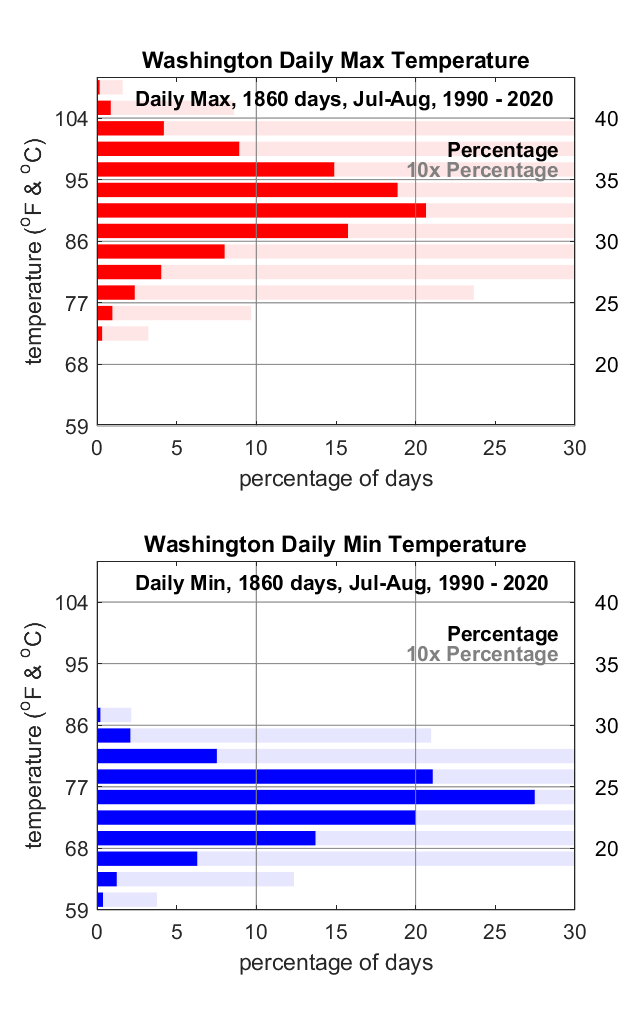Heat Wave in a London Context
Today the UK experienced its hottest day on record, with temperature reaching 104.3oF (40.2oC). Considering that British temperature records go back to the 1600s, that's a pretty long record to beat. But how does this week's furnace-like weather compare to a normal summer day in London?
To compare, I looked at daily high and low temperatures from July and August, 1990-2015, from the Hampstead weather station (GHCND: UKE00105915) in London. I plotted what percentage of the days had highs in different three-degree wide temperature bins (59-61 F, 62-64 F, etc.), shown in figure at right. The red bars show that the most common temperatures weraround 70oF.
This week's temperatures are over 30o hotter than a "typical" day. If Londoners were prone to freak out, this would be a good time to do so.
Even aside from breaking a 300+ year record, any temperature above the 80s is extremely rare in London. The percentage of days which get that hot are so small they are hard to see in the graph, so I added light pink bars in the background that are magnified by a factor of ten. Only 1.5% of summer days are in the 86-88o range, .4% in the 89-91o range, and less than .3% in the 92-94o range.
This week London is over ten degrees hotter than these extreme temperatures.
Daily low temperatures show a similar, if less extreme, pattern. Typical minimum temperatures are in the mid 50's, with vanishingly small number of days with minima above 68oF (2nd figure at right). I didn't see any specific figures for London, but parts of Britain did not go below 77oF (25oC) , over 20oF warmer than typical.

